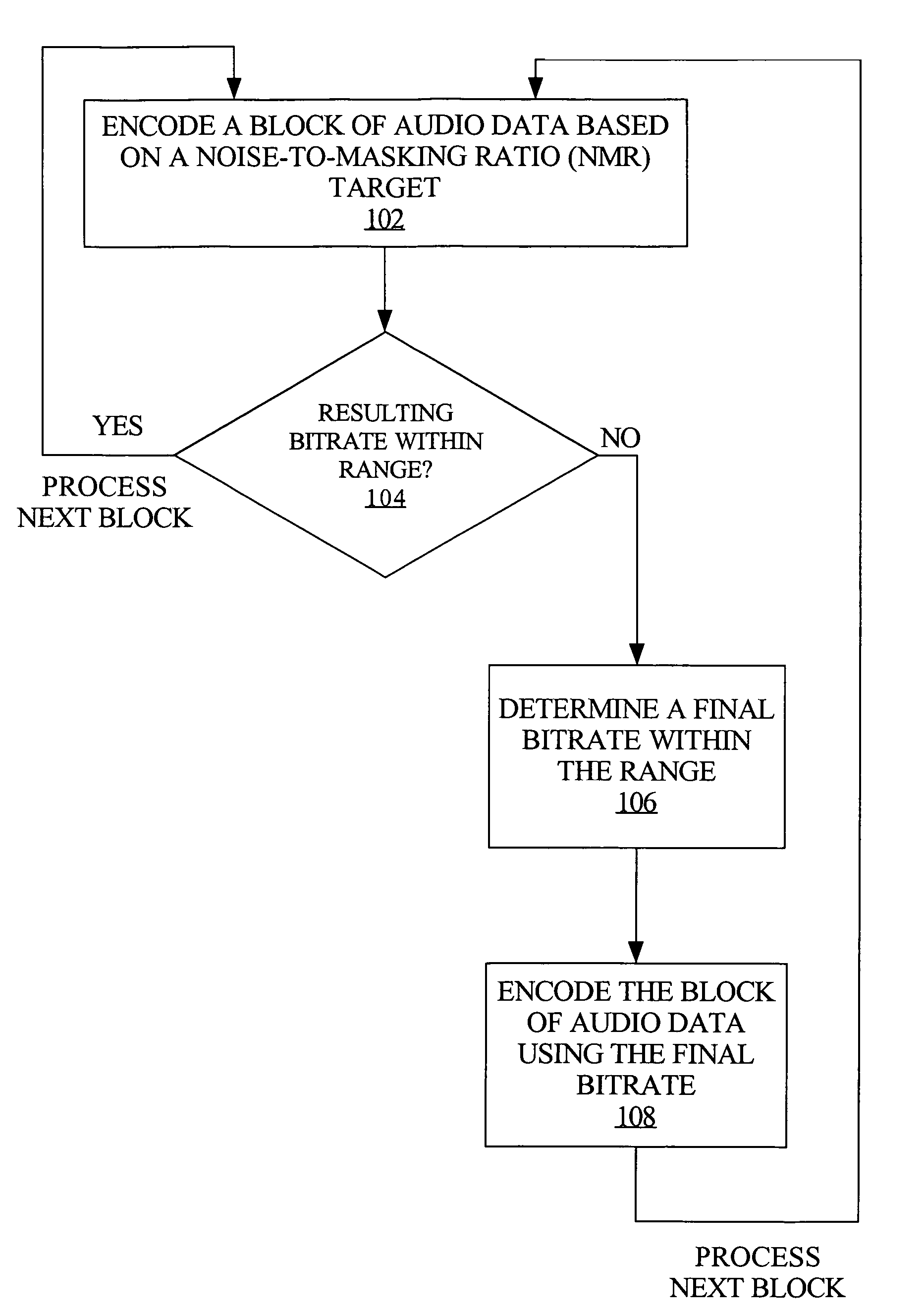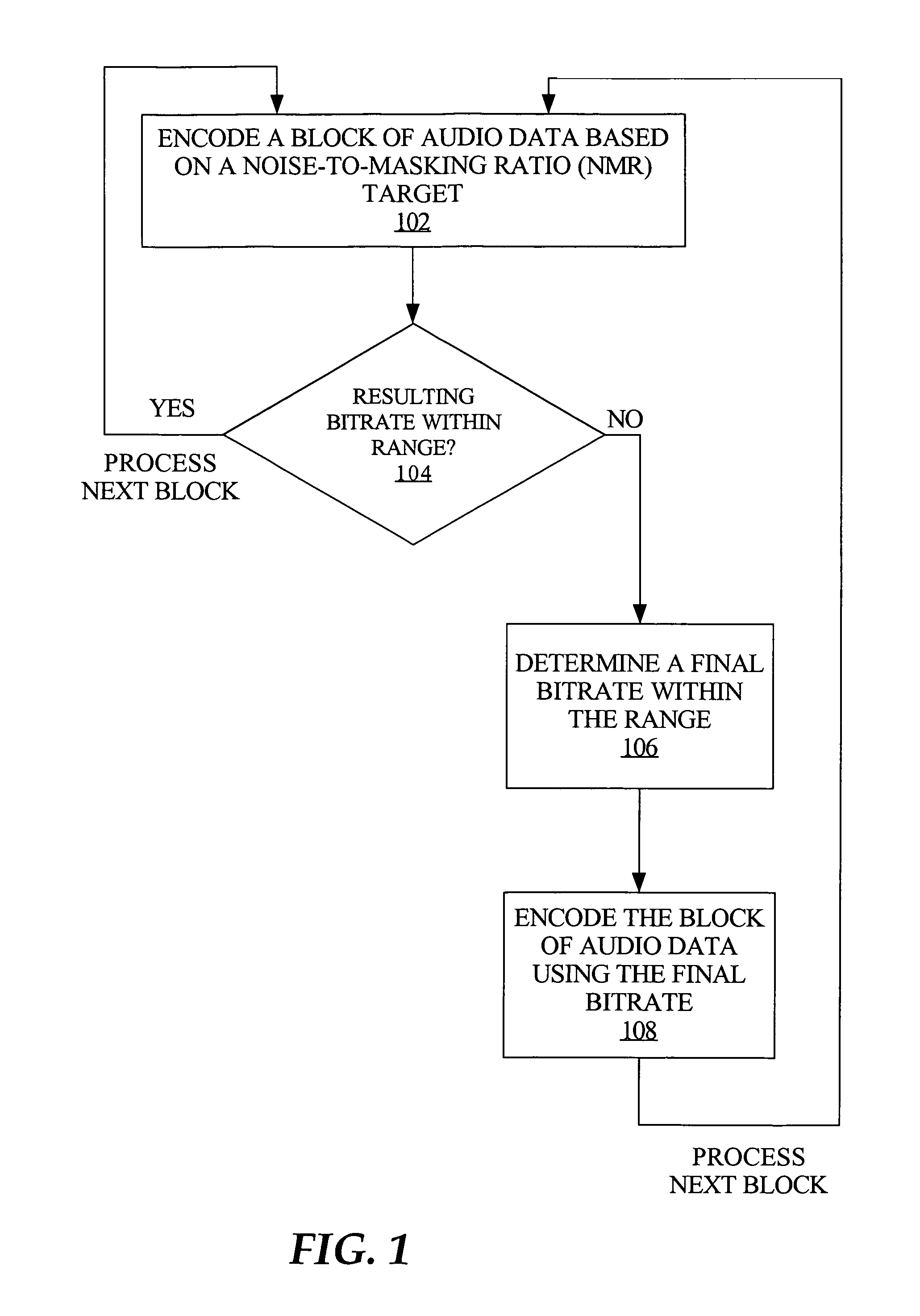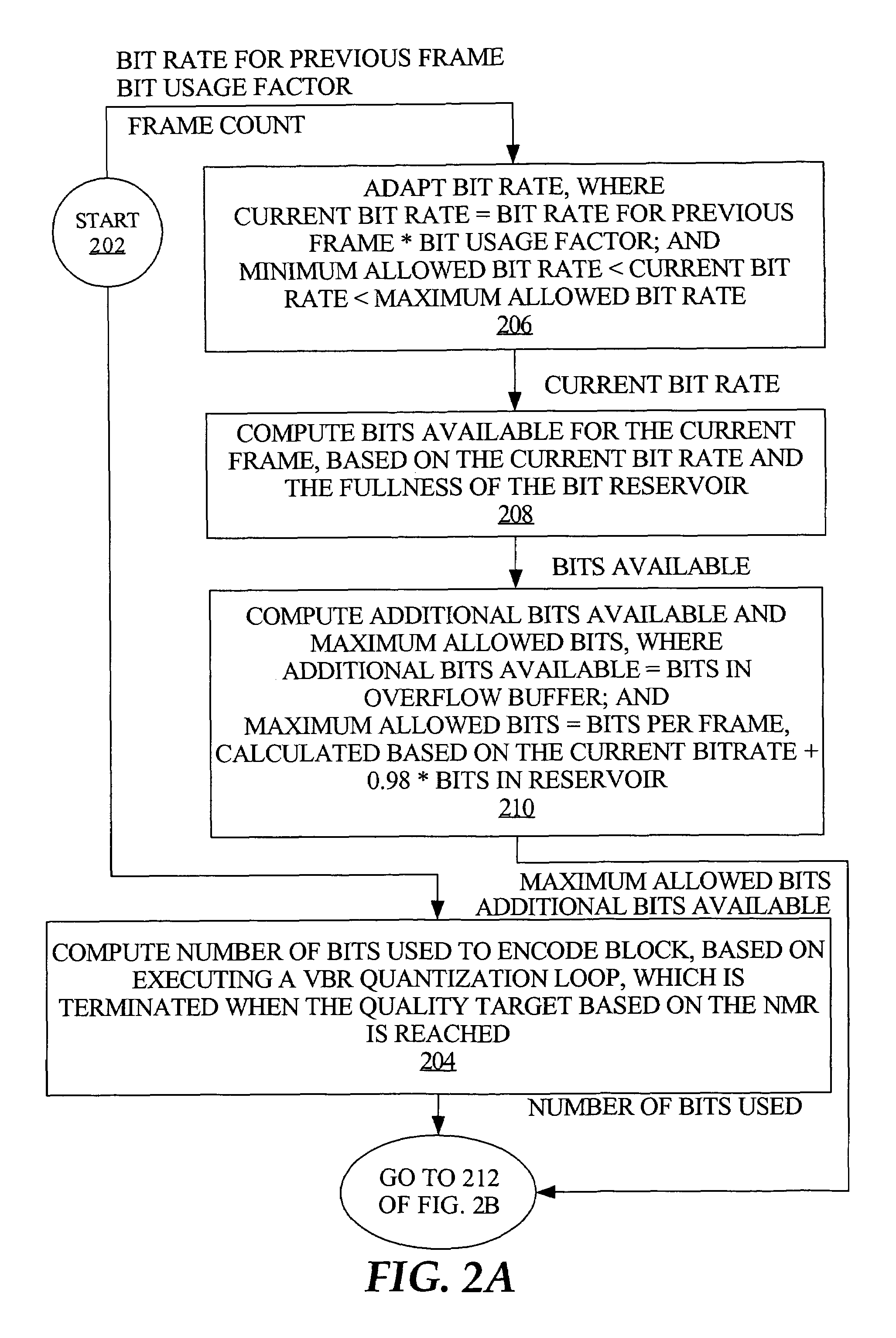Bitrate constrained variable bitrate audio encoding
a variable bitrate and audio encoding technology, applied in the field of digital audio processing, can solve the problems of undesirable cbr for other offline applications, difficulty in encoding, and inability to detect artifacts in similarly encoded complex classical music, and achieve the effects of reducing bitrate, unduly high sound quality, and eliminating excessive bitrates from use of conventional vbr mod
- Summary
- Abstract
- Description
- Claims
- Application Information
AI Technical Summary
Benefits of technology
Problems solved by technology
Method used
Image
Examples
Embodiment Construction
[0012]Bitrate constrained variable bitrate coding incorporates both ABR, or CBR, and VBR encoding modes to meet different audio coding requirements. The hybrid implementation of VBR can be applied, for example, to MPEG-2 and MPEG-4 AAC codecs.
[0013]In one embodiment of the invention, for each audio coding block, after a VBR quantization loop meets the NMR target, a second quantization loop might be called to adaptively control the final bitrate. That is, if the NMR-based quantization loop results in a bitrate that is not within a specified range, then an appropriate bitrate is adaptively determined and an ABR or CBR quantization loop is executed to meet this bitrate. The audio block can then be encoded using a quantization step that corresponds to the final bitrate.
[0014]Hence, for scenarios in which bits are wasted through use of a conventional VBR coder that results in excessively high bitrates and, therefore, sound quality that is unduly high compared to the desirable target, emb...
PUM
 Login to View More
Login to View More Abstract
Description
Claims
Application Information
 Login to View More
Login to View More - R&D
- Intellectual Property
- Life Sciences
- Materials
- Tech Scout
- Unparalleled Data Quality
- Higher Quality Content
- 60% Fewer Hallucinations
Browse by: Latest US Patents, China's latest patents, Technical Efficacy Thesaurus, Application Domain, Technology Topic, Popular Technical Reports.
© 2025 PatSnap. All rights reserved.Legal|Privacy policy|Modern Slavery Act Transparency Statement|Sitemap|About US| Contact US: help@patsnap.com



